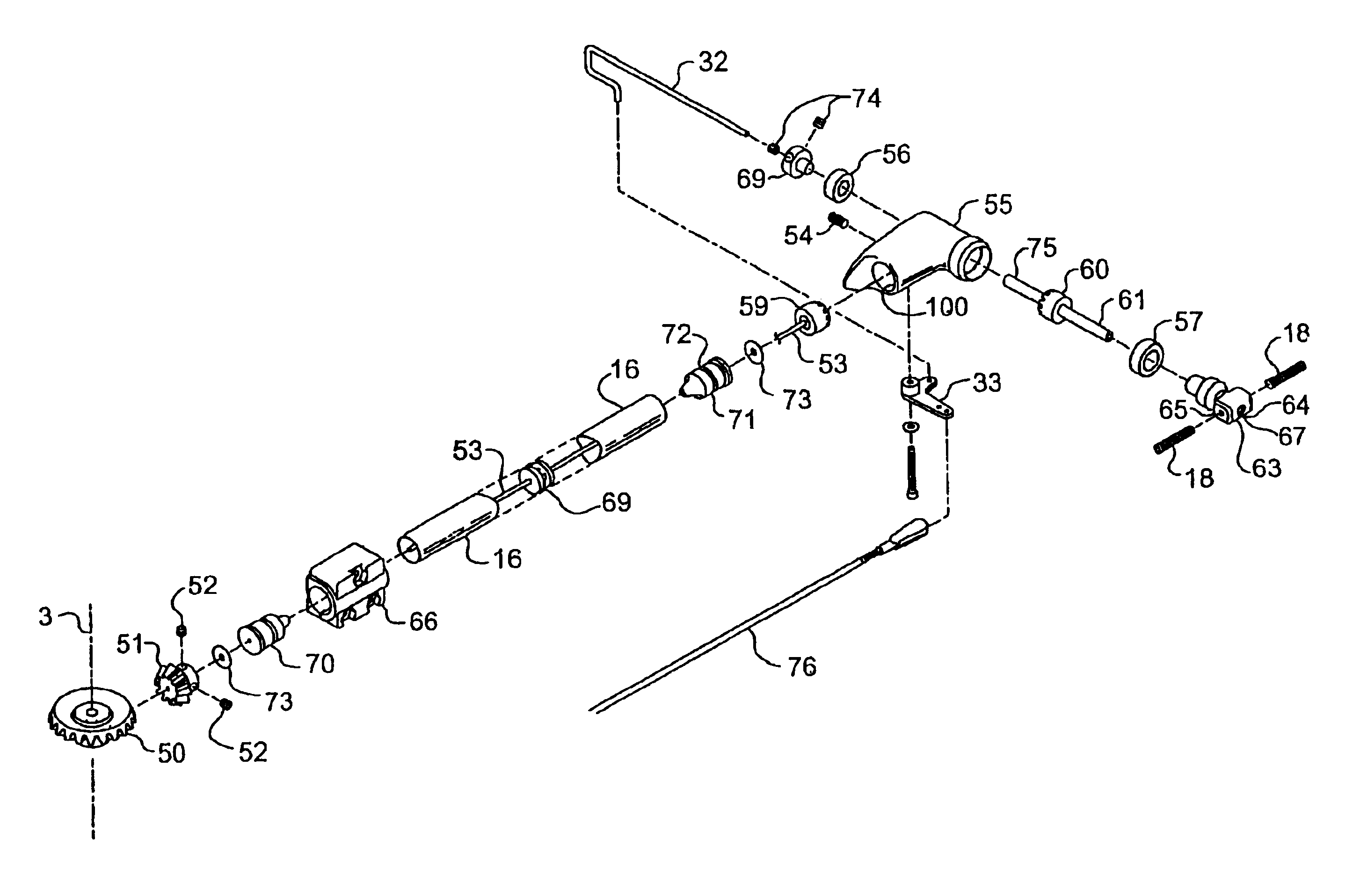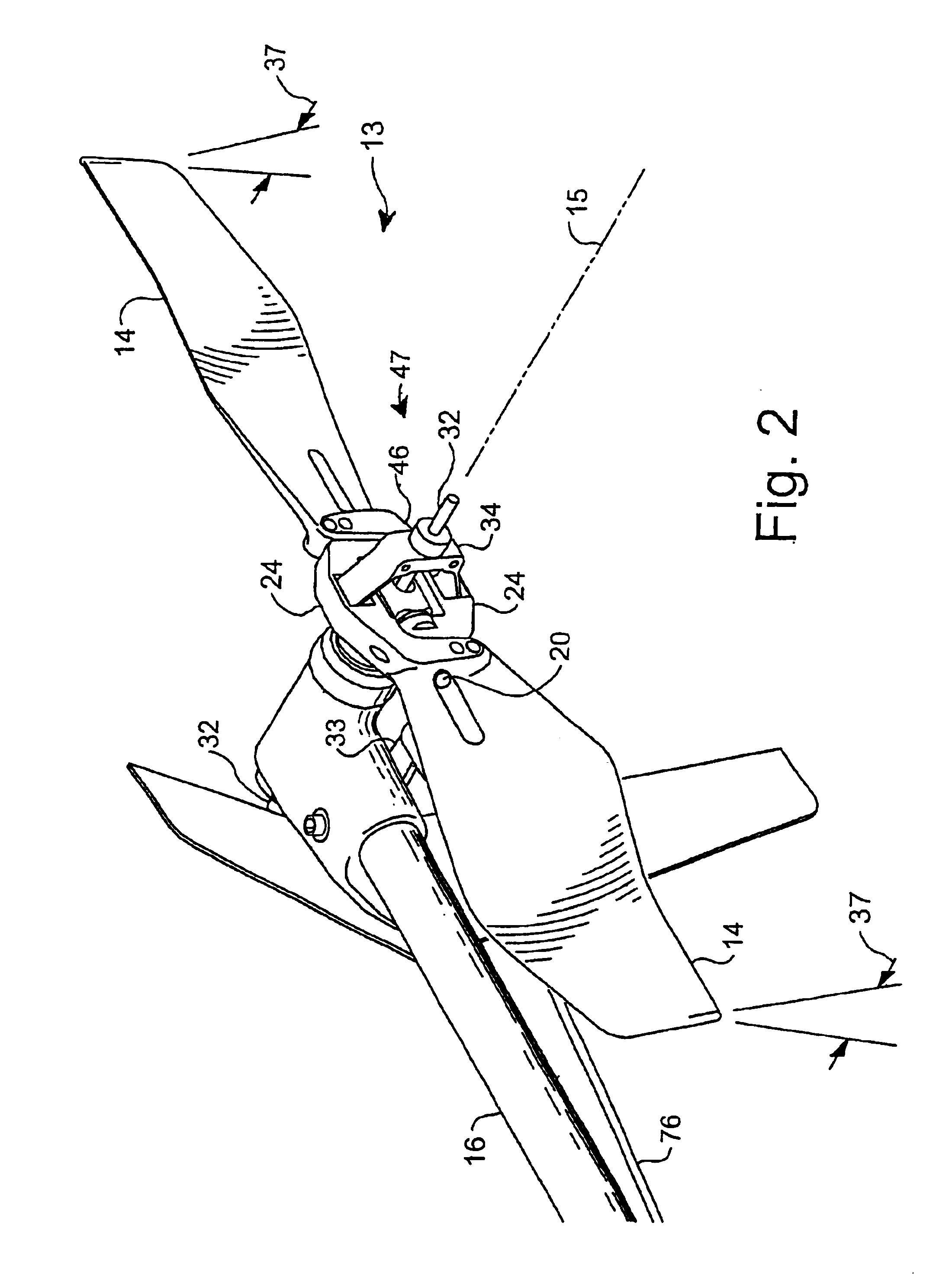Rotor system for helicopters
a helicopter and rotor technology, applied in the field of rotor systems for helicopters, can solve the problems of complicated and expensive helicopters, particularly difficult control of model helicopters, and difficulty in controlling helicopters, etc., and achieve the effects of more complicated and expensive, difficult control, and expensive repair
- Summary
- Abstract
- Description
- Claims
- Application Information
AI Technical Summary
Benefits of technology
Problems solved by technology
Method used
Image
Examples
Embodiment Construction
[0029]Referring to FIG. 1, a helicopter 1 is designed to include a large main rotor 2 which rotates about a main rotor axis of rotation 3 to lift helicopter 1 into the air. Helicopter 1 also includes a smaller tail rotor 13 which rotates about a tail rotor axis of rotation 15 to counteract the torque produced by main rotor 2 and steer helicopter 1. Tail rotor 13 is mounted at the end of a tail boom 16.
[0030]Both main rotor 2 and tail rotor 13 of helicopter 1 are driven by a power plant 7 such as engine or an electric motor (not shown) usually located within the fuselage (body) of helicopter 1 near main rotor shaft 6 (mostly hidden) although tail rotor 13 could also be operated by, for instance, a separate motor or engine (not shown) mounted at the end of tail boom 16. A streamlined fuselage shell 10 covers the front of helicopter 1, but does not extend back to tail rotor 13. In alternative embodiments, the fuselage shell may extend back to tail rotor 13 and enclose the tail boom 16....
PUM
 Login to View More
Login to View More Abstract
Description
Claims
Application Information
 Login to View More
Login to View More - R&D
- Intellectual Property
- Life Sciences
- Materials
- Tech Scout
- Unparalleled Data Quality
- Higher Quality Content
- 60% Fewer Hallucinations
Browse by: Latest US Patents, China's latest patents, Technical Efficacy Thesaurus, Application Domain, Technology Topic, Popular Technical Reports.
© 2025 PatSnap. All rights reserved.Legal|Privacy policy|Modern Slavery Act Transparency Statement|Sitemap|About US| Contact US: help@patsnap.com



